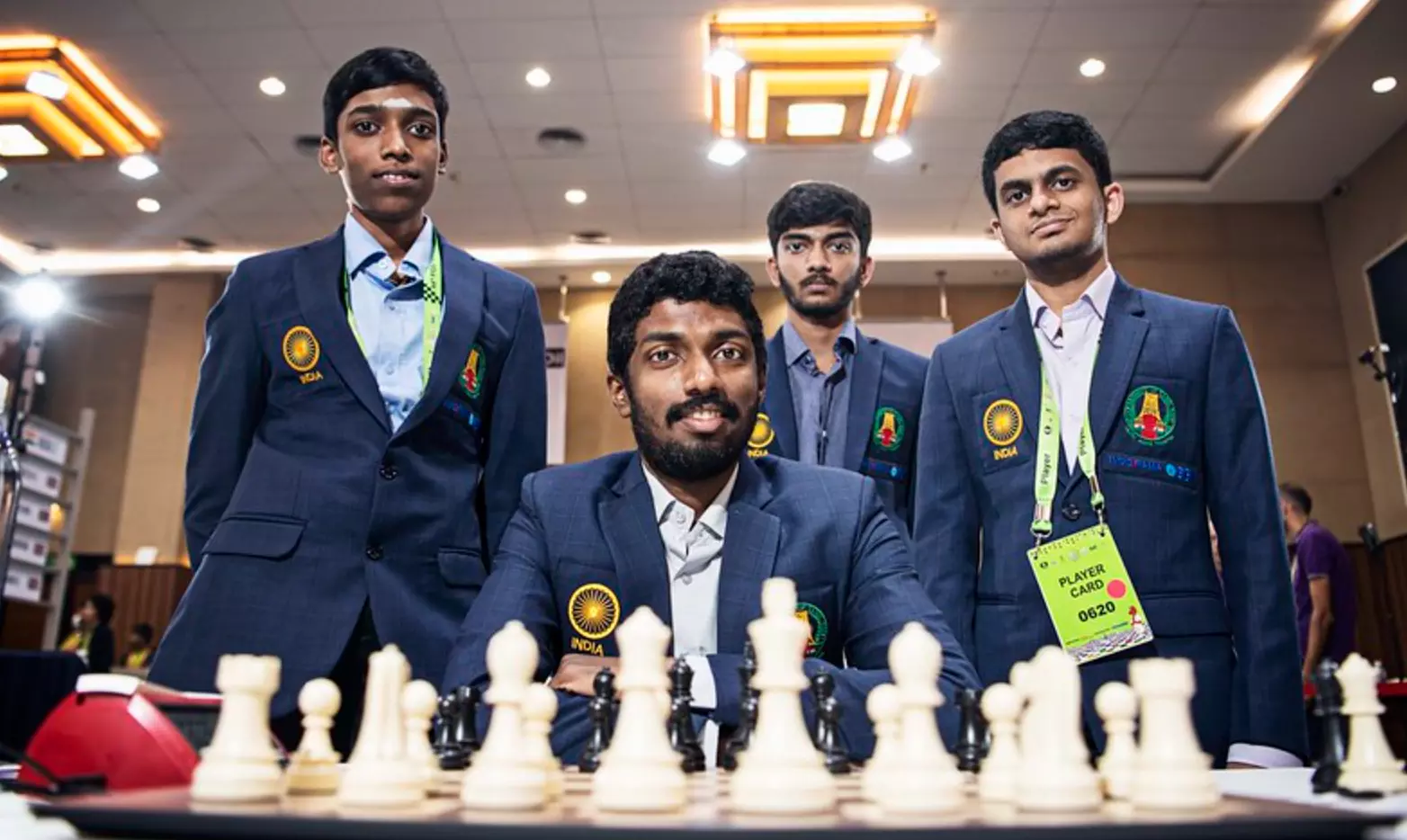Chess
Russian history, unemployment, lockdown: How India's golden generation brought chess to the forefront
India have become the only country after Russia to have 4 Grandmasters in the quarterfinals of a FIDE World Cup. RB Ramesh, India's 10th GM, says the country's current rise has its history in the break-up of the Soviet Union.

Praggnanandhaa (1st from left) and Gukesh (3rd from left) were among 2 of 4 Indians to have progressed to the FIDE World Cup quarters. (FIDE)
Chennai: Social media is buzzing with chess trivia, the 'Madras Tiger' Viswanathan Anand is excitedly sharing updates about Indian players at the FIDE World Cup.
India began this week with some 'black and white' instead of the 'blues' as Vidit Gujrathi defeated two-time World Championship Challenger, Ian Nepomniachtchi, to join D Gukesh, R Praggnanandhaa, and Arjun Erigaisi in the quarter-finals of the World Cup.
For the first time in chess history, four Indians are featuring in the top-8 of a World Cup. This was the first time any country had four Grandmasters in the top-8 of a World Cup apart from Russia.
The most audacious thing is that three of the four players are teenagers - Gukesh is 17, Praggnanandhaa is 18, Arjun Erigaisi is 19. Leading them is the 28-year-old Vidit Gujrathi.
"The whole chess world is getting younger. Indian youngsters are moving step-in-step with the world," chess coach and commentator RB Ramesh told The Bridge.
India's first Grandmaster, Viswanathan Anand, called this generation 'India's Golden generation' at an event a few years ago. There have been more than 50 Grandmasters from India in the last 10 years, showing how we are on the cusp of a chess revolution.
"With changing times, the whole world is taking up chess at a very young age. When I started playing, all the top players in the country were above 30 years. People used to become international masters at the age of 20 and above then," RB Ramesh said.
RB Ramesh
India's first GM, Viswanathan, was the youngest GM for a long time as the ones who followed him were much older.
India's second GM Dibyendu Barua was 25 years old and the third GM Praveen Thipsay was 28 years old. RB Ramesh himself attained his GM norm at the age of 27 in 2003.
It was 15-year-old Pentala Harikrishna who broke Anand's record of being the youngest GM. That record has been broken several time since and is currently held by Gukesh, who became a Grandmaster at the age of 13 in 2019.
How the break-up of Soviet Union helped chess grow globally
"One of the biggest reasons for the rise of chess is the access to good chess trainers in our country now. There is a bit of history here. The Soviet Union was the hub of chess and after it broke up, the whole chess literature was exposed to the world as these Grandmasters moved to different parts of the world and started transferring the knowledge," RB Ramesh explained.
The Soviets were the reason behind the rise of chess culture in Chennai too. The Soviet embassy here was one of the places where Indian players used to practise, including Viswanath Anand.
The knowledge transfer was immediate and imminent as per RB Ramesh.
"Once the chess literature reached India and Indian players started working with former world champions, the level of Indian chess started improving. After 2012 or 2013 onwards, we started getting GMs in bulk," he added.
The impact of working with chess trainers from the Soviet Union did wonders for the Indian players. There were 18 Indian GMs from 2001 to 2010 as compared to four GMs between 1991 and 2000.
Lack of jobs for chess trainers leads to quality coaching
The reason behind the abundance of quality chess trainers is an unfortunate one but it has done well for Indian chess in the long run.
"Earlier, Grandmasters used to get a job and be financially secure but with all these public sector companies cutting down on sports quota jobs, they became jobless," said Ramesh.
He explained further, "When the new GMs failed to secure jobs, they turned to teaching and training kids. We have seen a big influx of trainers in the past five years. We can credit the rise of Indian youngsters at the world level to an increase in the number of good trainers."
How the Covid pandemic turned into a boon for chess players
The other important reason was the lockdown imposed due to the Covid-19 pandemic. While the entire sports world was locked inside their rooms, chess was a rare sport which bloomed - over online platforms. A first ever FIDE Online Chess Olympiad was held in 2020 at the peak of the pandemic, featuring the best chess players in the world.
"The lockdown came as a boon for the chess industry in general. These young players (like Gukesh, Prag and Arjun) started getting access to world-class tournaments where they started playing the top players in the world frequently," said Ramesh.
Gukesh and Arjun in particular registered huge jumps in their ratings after the lockdown.
"The second thing that happened after the lockdown was that the Indian players started moving to Europe to play tournaments. Earlier, not everyone used to go, but during the lockdown everyone felt that they have fallen behind," Ramesh explained.
Currently, six Indian Grandmasters are above 2700 ELO rating, which includes India's number one Gukesh, the semi-retired Vishwanathan Anand, Vidit Gujrathi, R Praggnanandha, and Arjun Egiaisi.
RB Ramesh believes that depth of talent is important for the growth of chess in India.
"For all these players, it is important for them to be consistent at this level. The depth of talent in India will keep the competition high, pointing to a bright future for the sport," RB Ramesh signed off.
